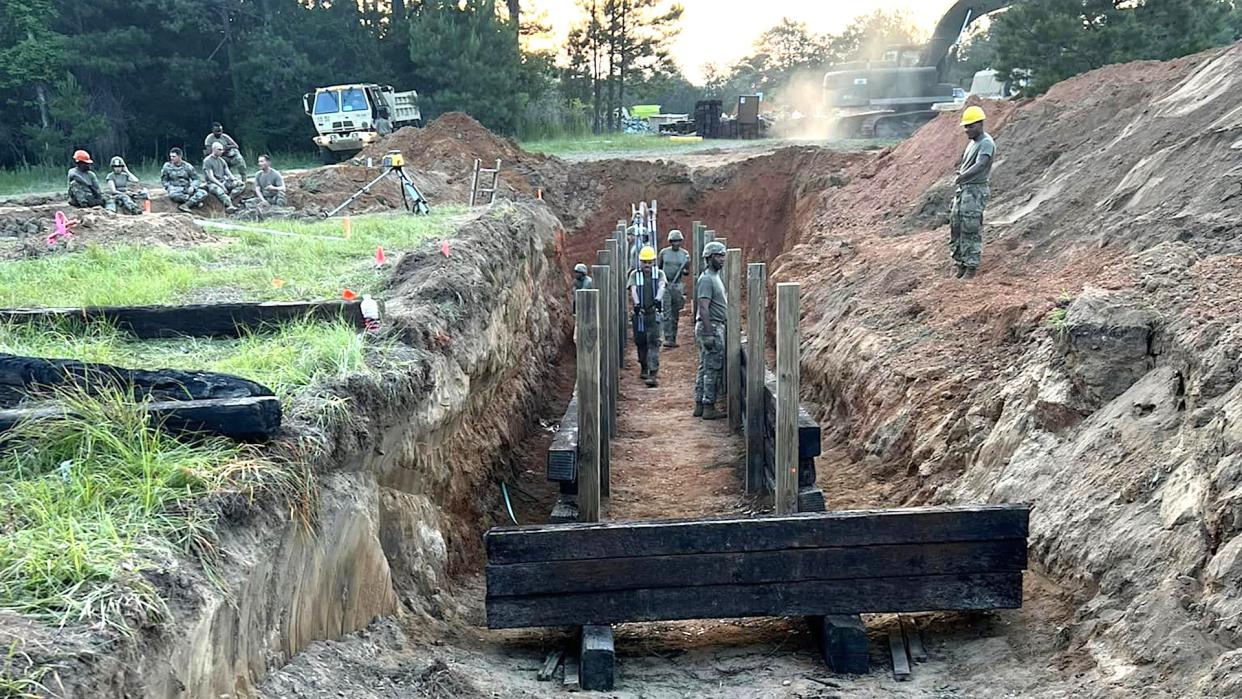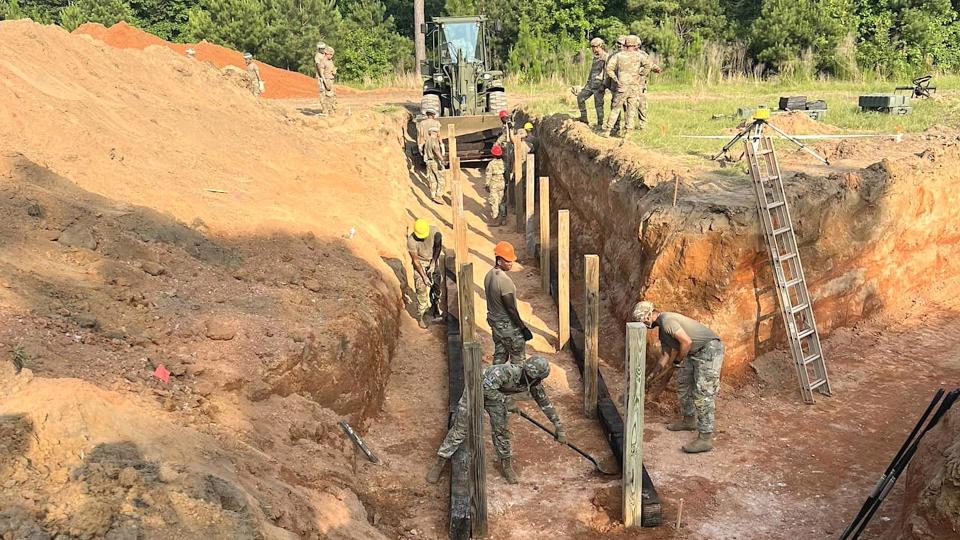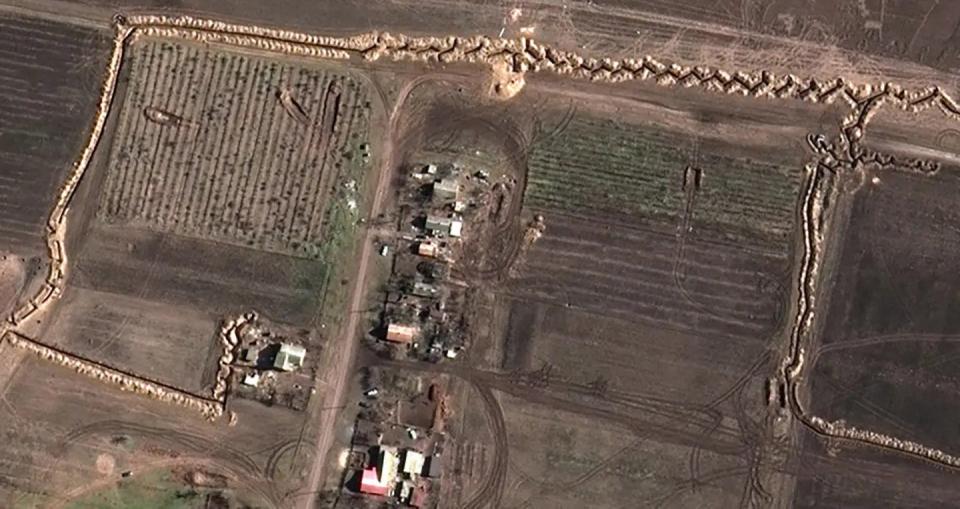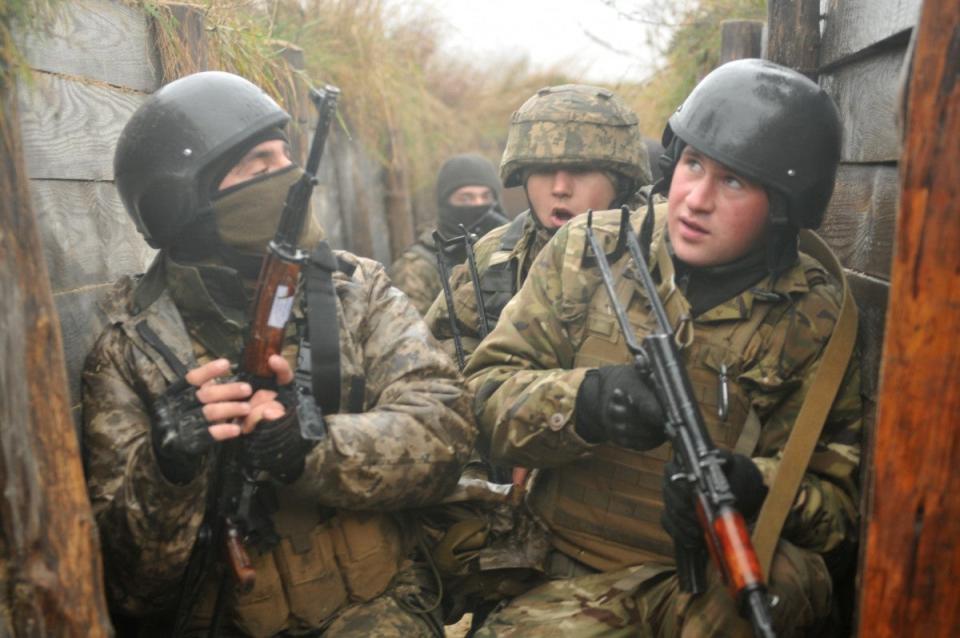Trench Warfare In Ukraine Casts Old School Army Training In Different Light

Combat engineers from the Georgia Army National Guard recently built a trench line to help train new recruits. Though the U.S. Army uses trenches in training evolutions and exercises, at first glance doing so may look like a throwback to time gone by. Sadly, that is not the case. In fact, their significance can be viewed with chilling clarity given the very active use currently of fortifications like this by both sides of the conflict in Ukraine.
Pictures showing members of the Georgia Army National Guard's 177th Engineer Support Company (ESC) cutting the trench at Fort Moore have been circulating online in the past day. However, an official post on Facebook from the company's parent unit, the 878th Engineer Battalion, indicates that this happened in June. Georgia's Fort Moore, previously named Fort Benning, is one of five basic training hubs within the Army and is also home to the service's Infantry and Armor schools.

This particular trench was reportedly constructed to support so-called "First 100 Yards" training at Fort Moore. In 2020, the Army's Infantry School replaced its "shark attack" method of greeting new cadets on their first day, which was largely characterized by drills sergeants screaming and otherwise seeking to intimidate them, with this new initial training regimen.
The First 100 Yards includes a number of different training events, including “a mock battlefield re-supply mission, physical fitness tasks, and a demonstration of the weapons, equipment, and methods infantry soldiers use in combat,” according to an Army press release in 2020. The tasks are intended in part to help immediately foster camaraderie between cadets and promote trust in their officers, as well as impart a general sense of military discipline.
https://www.youtube.com/watch?v=6M5KSw8qflU
It is perhaps not surprising that a trench is a part of the First 100 Yards. The name refers directly to troops leaving their trenches and beginning their advance across no-mans-land during World War I.
"Leaving the trench meant you believed in yourself … you believed you would make it. More importantly, leaving the trench … meant you believed in your teammates," Senior Drill Sergeant Sgt. 1st Class Matthew Hoyt is quoted as explaining to new infantry cadets at what was then Fort Benning in 2021. "Leaving the trench … also meant you had faith in your leaders. You believed they had the wisdom to make the call, they would lead you through the unknown obstacles ahead, and they had the experience needed to guarantee victory."
The 878th Engineer Battalion's Facebook post also highlights the value of building this trench for engineers like those assigned to the 177th Engineer Support Company. The personnel from the 177th gained useful "experience in equipment operation, shoring, and project planning and execution" in the process.
As the name of the First 100 Yards training program itself underscores, trenches remain heavily associated with World War I. This is something that popular media also continues to reinforce, including through films like 2019's 1917 and last year's new adaptation of the 1928 novel All Quiet on the Western Front.
https://www.youtube.com/watch?v=WYCo-3pw52o https://www.youtube.com/watch?v=AkI1Fxne8AY
In reality, trenches were heavily utilized in major conflicts before that and have continued to be a significant feature in warfare around the world since then. To this day, even relatively crude trenches can still provide some level of protection against direct and indirect fire, even from many modern artillery systems and other weapons. Clearing them can be extremely difficult and requires troops to engage in often especially brutal close-quarters combat.
Trenches have been obstacles to overcome or a way of protecting friendly forces, or both, in many major conflicts the U.S. military has been involved in since World War I. This includes Iraqi trench lines encountered in the First Gulf War and the U.S.-led invasion of Iraq in 2003, though in both instances they did little to slow down coalition forces.
Trench warfare could easily be a component in future conflicts involving the U.S. military. For instance, trenches are among the extensive networks of defenses that have been built up on both sides of the Demilitarized Zone (DMZ) that divides the Korean Peninsula.
The new trench construction at Fort Moore has, of course, come amid the ongoing conflict in Ukraine, where both sides have been making significant use of trenches and other battlefield fortifications. Russia's defensive lines have presented particularly problematic obstacles to Ukraine's current counter-offensive. One could argue that they are among a handful of major factors that are dominating that battlefield at this time.

With all this in mind, the U.S. Army, among other modern military forces, has used trenches for various kinds of training over the years and continues to do so.
https://www.youtube.com/watch?v=wdH3ICTYU2k
In what is now a particularly relevant example, trench clearing was part of the training regimen U.S. forces offered to Ukrainian units at the International Peacekeeping and Security Center in Yavoriv in the western end of the country prior to Russia's all-out invasion.

A trench can also offer a general close-quarters combat environment that personnel can use to practice skills that could be relevant elsewhere.
"To look at this as just a trench is, I think, pretty short sighted," 1st Lt. Anthony Frisone, a member of the 555th Engineer Brigade’s 570th Sapper Company at Joint Base Lewis-McChord in Washington State told journalist Kevin Knodell, then working for War Is Boring, about using them for training back in 2015. "This can be a trench, or a cave, or even a building with a lot of hallways."
https://www.youtube.com/watch?v=bBTYT21OqAE
Altogether, as the war in Ukraine is showing everyone right now, trenches could remain a staple feature in major conflicts for the foreseeable future. Training with can help soldiers gain skills that are also useful in an urban fight. As such, learning to build them and training to clear them, as well as just using them to help introduce new recruits to basic soldiering, will continue to be important for the U.S. Army and armed forces.
Contact the author: joe@thedrive.com

